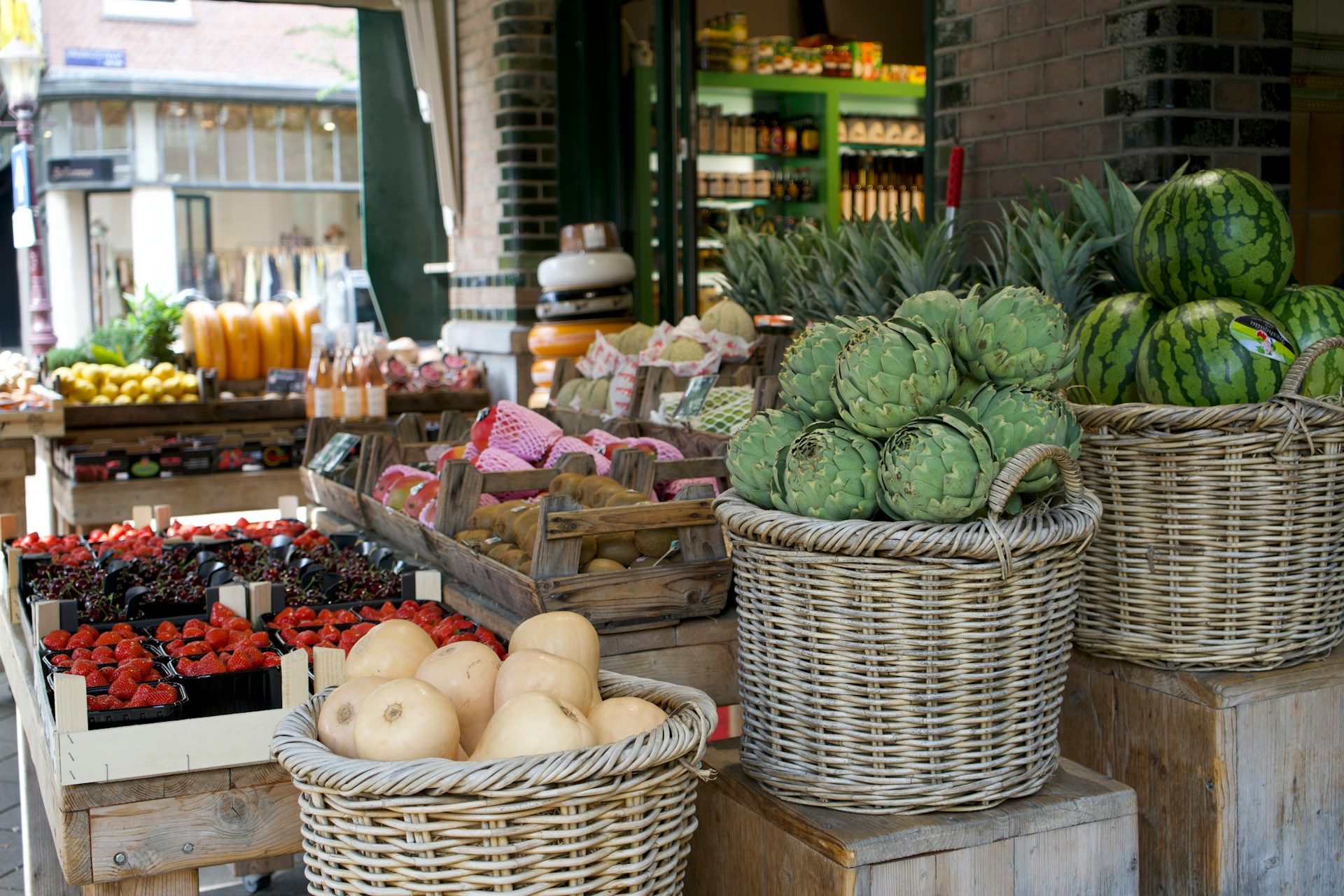Effective inventory management is the lifeline of any produce retail operation.
Without the right strategies to optimize inventory, even the most established retail stores can quickly find themselves coping with stock-outs, wastage, and narrowed profit margins.
Strategically tackling inventory in the produce sector is pivotal due to the perishable nature of the goods handled.
By implementing proven inventory optimization techniques, retailers can drastically improve their profitability and efficiency.
This blog post is geared towards elucidating such techniques that can enhance inventory management for produce retailers.
We’ll explore tried-and-tested methods and cutting-edge approaches, unearthing insights that can be instrumental in nurturing your retail business’s growth.
Ways To Optimize Inventory In Produce Retail
1. Implementing efficient first-in-first-out inventory system
Optimizing inventory in produce retail starts with embracing an efficient inventory system like the first-in-first-out (FIFO) approach.
Prodigious challenges faced in the retail industry such as stock spoilage, high carrying costs, and capital tied up in the inventory can be overcome by properly administering this strategy.
The first-in-first-out (FIFO) inventory method implies that items coming into the inventory first are the ones to be sold first.
The primary advantage that this system offers to produce retail is the reduction of spoilage.
Since produce cannot be stored for an extended period, selling items in the order they arrive greatly reduces the chances of them going bad and turning into waste.
Selling items in the order they arrive greatly reduces the chances of them going bad and turning into waste.
To implement a FIFO system, it’s beneficial to design your storage in a way that facilitates this approach.
Stock should be organized in a way where the oldest items are at the front and are, therefore, sold first.
New stock is introduced at the back, pushing the older stock forward. This ensures that the inventory rotation follows the FIFO method appropriately.
The FIFO method also helps in more accurate financial reporting.
Since the costs of goods tend to rise with inflation, the newest, costlier inventory still remains in stock at the end of accounting periods with this method and is accounted for in the balance sheet.
Hence, this advantage lets businesses show a lower cost of goods sold, higher profit, and greater tax liability than the last-in, first-out (LIFO) method.
Moreover, this method requires less administrative work.
Companies do not need to track the individual cost of each item available in the inventory. Thus ensuring some ease in managing inventory.
Therefore, by embracing the first-in-first-out inventory system, companies can achieve optimum inventory control, more accurate financial reporting, and a significant decrease in waste generation.
However, to fully reap these benefits, businesses must aspire to utilize automated inventory management systems that make using the FIFO method effortless and straightforward.
2. Diversifying Suppliers to Ensure Stock Availability
One critical step towards optimizing inventory in produce retail is diversifying one’s suppliers.
This strategy involves sourcing similar products or produce from multiple suppliers.
Diversity in suppliers can insulate a retailer against the effects of product shortages and ensure that their stock levels are always adequate.
Regular interruption in the supply chain can lead to inventory shortage, and this invariably affects sales.
Therefore, having a list of alternative suppliers that a retailer can turn to during shortages can help maintain inventory levels.
There is a need to research potential suppliers and consider factors such as their reliability, cost, quality and delivery times.
It’s a balancing act between alternating and diversifying suppliers without compromising the quality of the produce.
Diversification does not only help maintain inventory levels, but it can also possibly lead to better deals, improved quality, and eventually, increased profits.
It’s also beneficial to understand the seasonal availability of produce.
By knowing when specific types of produce are in season or out of season can help a retailer source goods more efficiently and reduce waste.
Pre-agreed contracts with suppliers can also ensure consistent supply and can be a part of a risk management strategy.
Such contracts can provide some buffer against price volatility and supply interruptions.
It’s essential to have ongoing discussions with suppliers about expected sales estimates, any changes in demand, and potential challenges that may affect the supply.
Lastly, the use of technology can help in managing suppliers by tracking and assessing their performance, which aids in making better procurement decisions.
Overall, diversifying suppliers is a strategic way to optimize inventory, reduce the risk of stockouts and increase customer satisfaction by ensuring produce availability at all times.
3. Regularly analyzing sales data for demand forecasting
The role of sales data analysis in inventory optimization is indubitably substantial.
By regularly utilizing this data, retailers can make accurate demand predictions.
These predictions allow them to efficiently allocate resources and avoid overstock or stock-out situations.
Raw sales data can provide crucial insights into consumer buying habits.
This information sheds light on peak selling seasons, popular items, and sales trends.
Understanding these aspects helps retailers to tailor their inventory per the anticipated demand.
A robust sales data analysis process facilitates accurate demand forecasting.
Demand forecasting, in turn, leads to better inventory management and ultimately, cost savings.
Retailers who do not embrace analytical methods in inventory management often find themselves grappling with various inventory issues.
These problems could range from having a surplus of perishable produce to running out of stock of high-selling items.
Moreover, sales data analysis is not just about guiding inventory management.
It also plays a crucial role in judging the effectiveness of marketing campaigns and pricing strategies.
Retailers can assess whether a particular marketing strategy brought in more sales, or if a change in the pricing strategy affected the overall store sales.
By doing so, they can refine their sales tactics and increase their profits.
Furthermore, analyzing sales data over time can reveal long-term trends.
These trends can aid in strategic planning and help foresee future market changes.
In essence, the process of regular sales data analysis is a potent tool for demand forecasting and inventory optimization.
4. Transitioning to Automated Inventory Management Systems
When seeking ways to optimize inventory in produce retail, transitioning to automated inventory management systems is currently one of the best decisions.
The transition is not a simple technical move; rather, it is a significant shift in the way inventory is managed.
Automation reduces human error and simplifies complex inventory tracking processes, especially if managing huge amounts of a broad assortment of produce.
Particularly useful for perishable items generally found in produce retail, automated systems can help track expiration dates, managing goods in accordance with the first-in-first-out (FIFO) principle.
By ensuring that the oldest inventory is sold first, waste resulting from spoilage can be significantly reduced.
Moreover, automation helps in optimizing store space by identifying slow-selling items and freeing up spaces for products that are in higher demand.
Automated systems rely on real-time data and can provide immediate visibility to stock levels at any given time.
This efficient management of inventory helps in maintaining the right balance of stock and understanding trends for future purchasing.
Most automated systems also have analytic capabilities, providing integral insights for decision-making.
It allows store owners to make detailed sales predictions for products to manage the inventory levels appropriately.
An efficient automated inventory management system is also vital when it comes to customer satisfaction.
Being able to reliably tell customers whether a product is in stock, in transit, or out of stock can keep customer expectations managed and customer satisfaction intact.
Apart from all these, automated systems can help to rapidly identify any discrepancies in inventory and fix issues more efficiently before they affect the bottom line.
However, the transition to an automated system requires careful planning and training for staff members who will be using it.
Therefore, while the task might seem daunting at first, businesses will likely see improved efficiency and significant savings in the long run.
The investment in an automated inventory management system for produce retail, thus, is not just about financial expenditure; but is an investment into improving productivity, efficiency and ultimately, profitability.
5. Investing in proper storage to reduce waste.
Inventory waste is a chronic issue in produce retail, drastically impacting the business’s bottomline.
Surprisingly, about 30% of agricultural produce never reaches consumers due to a lack of proper storage facilities.
Investing in proper storage facilities is a strategic move to enhance inventory optimization in the produce retail business.
This investment primarily includes advanced storage technologies and efficient warehouse management system that keeps the produce fresh for extended periods.
When inventory stays fresh for a longer duration, the waste percentage reduces significantly, translating into better sales and bigger profits.
A properly designed warehouse can improve efficiency and productivity by incorporating features like temperature control and better air circulation.
These elements are crucial for fresh produce as they help reduce deterioration and extend shelf life.
It is, therefore, essential to invest in a high-quality warehouse facility that has adequate storage capability to handle your inventory requirements.
Improved warehouse design also includes strategies for creating maximum storage space and easy accessibility to the produce.
Simple efforts comprising frequent cleaning, avoiding overstocking, and the orderly arrangement of items can lead to efficient operation and reduced wastes.
Furthermore, the labeled inventory and clearly indexed items enable quicker picking and dispatching, thereby minimizing handling time and potential spoilage.
Another important aspect is training the staff on proper inventory handling techniques in the storage facility.
Investing in such training programs can significantly reduce the instances of produce damage during the storage period.
A robust logistics and storage strategy is only as effective as the people who implement it; hence constant emphasis should be placed on team training and knowledge enhancement.
Sustainable packaging is another trending investment amongst produce retailers, aiming to improve storage while being environmentally responsible.
This precedent stands as an attractive selling point for customers who prefer to purchase from eco-friendly businesses.
Therefore, properly investing in storage and related aspects can notably contribute to optimizing the inventory and improving the overall performance of your produce retail business.
The Bottom Line
Efficiency in stock control comes from a multifaceted approach that incorporates modern advances while remembering time-tested logistics techniques.
Strategically implementing a first-in, first-out inventory system enhances practicality, reduces waste, and promotes better cash flow.
The diversification of suppliers provides a buffer for periods of low stock availability, setting a tone of robustness and dependability.
Analyzing sales data and integrating trends into demand forecasting is already contributing to enhanced predictability and successful planning for various scenarios.
The switch to automated inventory management systems is a leap into synchronized, real-time stock monitoring, minimizing overstocking and out-of-stock incidents, thus improving customer satisfaction.
Combined with investment in proper storage methods, these practices drastically reduce waste, costs, and increase efficiency across the whole process.
These logistical enhancements are set to revolutionize businesses, ultimately leading to improved profitability and consumer satisfaction.




